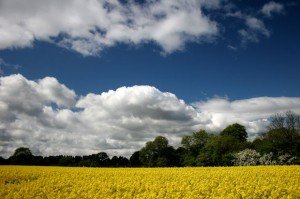
In the summer of 1893, Katie took a “Grand Tour of America” and headed out west to Colorado to teach summer school at the newly formed University of Colorado. Along the way she wrote in her diary of the “exhilarating vistas” and waving fields of wheat. She stopped at the 1893 World’s Fair in Chicago and was amazed with the technology and innovation on display. On July 5th, Katie arrived in Colorado Springs. She wrote in her diary that she was “taken with the purple range of the Rocky Mountains.” The highlight of this trip was an excursion to the top of Pike’s Peak.
On July 22nd, Katie, along with the other teachers, piled in a wagon with “Pike’s Peak or Bust” painted on the side, and made their way up the mountain. Along the way she was impressed with the views of the sweeping plains to the east and the towering mountains to the west. From the impressions collected on this journey she wrote in her journal, “Most glorious scenery I ever beheld.” She added to this the lines which are famous in our nation, “Oh Beautiful for Spacious Skies…” from all the experiences on this trip came the poem America the Beautiful, which first appeared in print in The Congregationalist in 1895.
Five years before Katie’s trip, Samuel Augustus Ward’s newly penned hymn Materna appeared in print and was set to the words of the poem, “O Mother, Dear Jerusalem.” Samuel Ward, the composer of the hymn, was a native of New Jersey and very prominent in the late 19th Century as a composer and choir leader.

Katie’s poem and Ward’s hymn did not meet right away. In 1904, a Baptist minister named Clarence A Barbour from Rochester, NY realized the beauty of Katie’s poem and felt it should be sung as a hymn. One night he and his wife were searching thru a hymnal to try and find suitable music for this poem. After trying many different songs, the couple came to Ward’s Materna. Materna, which had been printed for many years in other hymnals, was written in Common Meter Double, or CMD, which fit the cadence of Katie’s poem perfectly. In 1910, Dr. Barbour published the poem and the hymn together for the first time, in Fellowship Hymns. As this combination was sung it became more and more popular and appeared in more and more publications and soon became an American tradition.
Samuel Ward and Katie Bates both understood the power of words and music. Katie once said, “If I could write a poem people would remember after I’m dead, I would consider my life had been worth living.” Ms. Bates we remember your poem and love it dearly—your’s and Samuel Ward’s lives, were both well lived. Thank you.
O beautiful for spacious skies,
For amber waves of grain,
For purple mountain majesties
Above the fruited plain!America! America!
God shed His grace on thee,
And crown thy good with brotherhood
From sea to shining sea!O beautiful for pilgrim feet
Whose stern impassion’d stress
A thoroughfare for freedom beat
Across the wilderness.America! America!
God mend thine ev’ry flaw,
Confirm thy soul in self-control,
Thy liberty in law.O beautiful for heroes prov’d
In liberating strife,
Who more than self their country loved,
And mercy more than life.America! America!
May God thy gold refine
Till all success be nobleness,
And ev’ry gain divine.O beautiful for patriot dream
That sees beyond the years
Thine alabaster cities gleam
Undimmed by human tears.America! America!
God shed His grace on thee,
And crown thy good with brotherhood
From sea to shining sea.
This history was taken from the book, America the Beautiful: the Stirring True Story Behind Our Nation’s Favorite Song. by Lynn Sherr (Public Affairs: Perseus Books Group, New York, 2001)